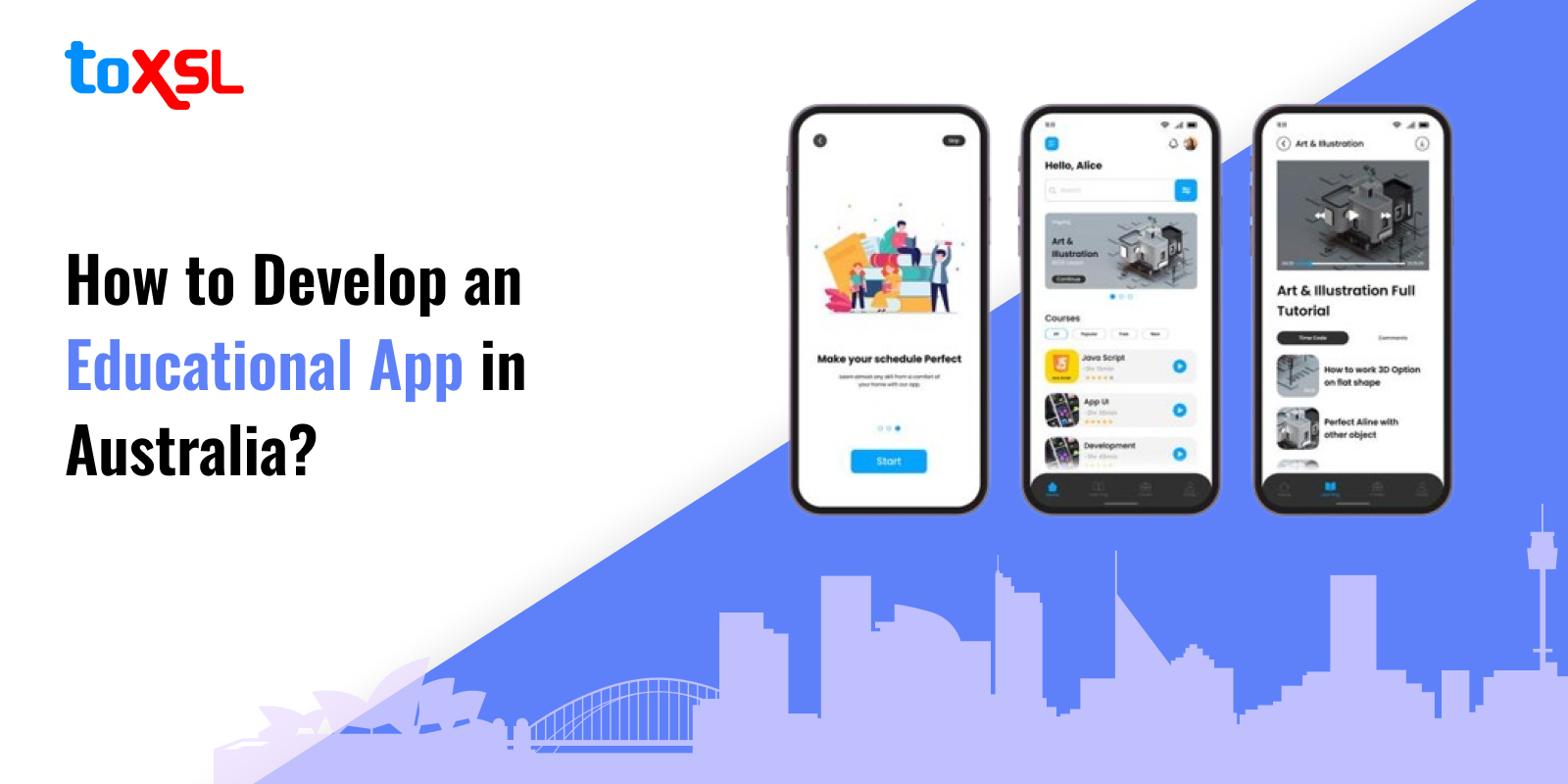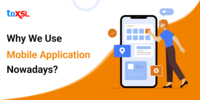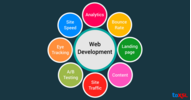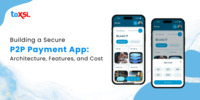- Apr 08, 2025
Share this post on:

Are you looking to unlock the potential of digital education? We have all witnessed a transition from offline to online formats, which has also affected the education and learning sector in Australia. The rise in screen time has reduced interest in reading and learning from books.
The educational app market is experiencing rapid growth.
The growth is driven by advancements in technology and improving learning preferences. In Australia, the demand for digital learning solutions has surged, particularly following the COVID-19 pandemic, which highlighted the need for flexible and accessible education options.
According to Statista, the online learning platform market is estimated to reach $281.20 million by 2024, giving rise to educational apps. These stats clearly describe how well educational apps in Australia have become the need of the hour. But how do businesses develop an educational app in Australia? Keep reading the blog to learn more.
Key Takeaways
Growing Market: Educational apps in Australia are booming, projected to reach $281.20M by 2024.
Development Costs: Costs range from AUD 20,000 to 250,000, depending on complexity, features, and platform choice.
Steps to Success: Key steps include market research, defining purpose, planning features, choosing tech stacks, UI/UX design, and robust testing.
Post-Launch Support: Regular updates, security enhancements, and user feedback integration are essential for long-term success.
Partner with Experts: ToXSL Technologies offers expertise in creating innovative educational apps tailored to your needs.
Step-by-Step Guide to Developing an Educational App in Australia
In this section, we will discuss the steps that are needed to develop an educational app in Australia.
1. Understanding the Market
Before diving into development, it's crucial to understand the educational app market in Australia. Research current trends, user needs, and existing competitors. This will help you identify gaps in the market and define your unique value proposition.
2. Defining Your App’s Purpose
Clearly outline what your educational app aims to achieve. Is it for K-12 students, university learners, or adult education? Understanding your target audience will guide your design and functionality decisions.
3. Planning Your App Features
The features of your app will significantly affect its development cost and complexity. Here are some common features you might consider:
- User Authentication: Secure login for students and educators.
- Content Delivery: Multimedia content such as videos, quizzes, and articles.
- Interactive Features: Gamification elements like badges and leaderboards.
- Progress Tracking: Tools for users to monitor their learning journey.
- Discussion Forums: A platform for peer interaction and support.
- Push Notifications: To keep users engaged with reminders and updates.
4. Right Technology Stack
Selecting the appropriate technology stack is vital for your app's performance and scalability. Consider:
- Native vs. Cross-Platform Development: Native apps (iOS or Android) offer better performance but are more expensive. Cross-platform frameworks like Flutter or React Native can reduce costs by allowing you to write code once for both platforms.
- Backend Technologies: Choose reliable backend technologies that can handle user data securely.
5. Designing the User Interface (UI)
A user-friendly design is crucial for educational apps. Focus on creating an intuitive interface that enhances learning experiences. Consider hiring a professional UI/UX designer who understands educational contexts.
6. Development Process
The development phase typically involves:
Creating a Minimum Viable Product (MVP): Start with a basic version of your app that includes core features. This allows you to test the market with lower initial costs.
Iterative Development: Use agile methodologies to refine your app based on user feedback.
7. Testing Your App
Thorough testing is essential to ensure functionality, usability, and security. Conduct various tests including:
• Functional Testing: Ensure all features work as intended.
• Usability Testing: Gather feedback from real users to improve UX.
• Performance Testing: Check how the app performs under different conditions.
8. Launching Your App
Once testing is complete, prepare for launch:
• App Store Optimization (ASO): Optimize your app’s listing on platforms like Google Play and Apple Store to improve visibility.
• Marketing Strategy: Develop a marketing plan that includes social media promotion, content marketing, and partnerships with educational institutions.
9. Post-launch Support
After launch, continuous support is crucial for user retention.
• Regularly update the app based on user feedback.
• Address bugs promptly and ensure compliance with data protection regulations.
Cost of Developing an Educational App in Australia
The educational app market in Australia is booming, driven by the need for innovative learning solutions that cater to diverse learning styles and environments. As educational institutions and learners increasingly turn to mobile technology, understanding the cost of developing an educational app becomes essential for entrepreneurs and organizations.
The cost of developing an educational app in Australia can vary significantly based on several factors. Generally, you can expect to pay between AUD 20,000 and AUD 250,000 for a custom educational app. This broad range reflects the complexity of the app, the features included, and the development approach chosen.
Cost Breakdown by Complexity
Complexity Level Estimated Development Time Cost Range (AUD)
Basic 3 - 6 months $15,000- $50,000
Medium 6 - 12 months $50,000 - $150,000
Advanced 12+ months $150,000+
Key Factors Affecting Development Costs
Several factors can influence the overall cost of developing an educational app:
1 Features and Functionality
The complexity and number of features included in your app will significantly impact development costs. Here are some common features and their estimated costs:
• User Authentication: $5,000-$10,000
• Content Delivery (videos, quizzes): $10,000-$20,000
• Interactive Features (gamification): $10,000-$20,000
• Progress Tracking: $5,000-$10,000
• Discussion Forums: $5,000-$10,000
More advanced features, such as AI-driven personalized learning paths or integration with learning management systems (LMS), can further increase costs.
2 Design and User Experience (UX)
A well-designed user interface (UI) is crucial for educational apps. Investing in high-quality design can raise development costs but is essential for user engagement. Custom animations and graphics will also add to the expense.
3 Platform Choice
The choice between developing a native app for iOS or Android—or both—affects the overall cost. Native apps tend to be more expensive due to separate coding requirements for each platform. Cross-platform development may be more cost-effective but could compromise performance and user experience.
4 Location of Development Team
Hiring local developers in Australia generally incurs higher costs compared to outsourcing to countries with lower labor rates. However, local developers may offer better communication and a deeper understanding of the Australian market.
5 Third-party IntegrationsAustralia is a hub for the best app development companies in the software industry.
Educational apps often require integration with third-party services such as payment gateways or cloud storage solutions. Each integration can add to both development time and costs.
6 Security and Compliance
Ensuring compliance with educational standards and implementing robust security measures can lead to increased costs. Features such as data encryption and secure login are essential but require additional investment.
Typical Costs Based on App Type
Different types of educational apps may have varying costs based on their functionalities:
Type of Educational App Cost Range (AUD)
Language Learning Apps $30,000 – $150,000+
Subject-Specific Apps $20,000 – $100,000+
Coding and Programming Apps $40,000 – $200,000+
Ongoing Costs After Launch
Post-launch maintenance is crucial for keeping your app functional and relevant.
• Bug Fixing: Regular updates to fix bugs.
• Cloud Hosting: Depending on usage levels.
• Security Enhancements: Regular updates to ensure data protection.
• Content Updates: Keeping educational material current.
Ongoing maintenance typically costs around 15% to 20% of the initial development cost annually.
Benefits of an Education App Development
Developing an educational app offers numerous benefits that can significantly enhance the learning experience for users. Here are some of the key advantages:
1. Flexibility
Educational apps provide flexible learning options that allow users to study at their own pace, place, and time. This flexibility is especially beneficial for individuals with busy schedules, such as working professionals and parents, enabling them to balance education with other commitments.
2. Accessibility
These apps ensure access to educational resources from anywhere with an internet connection. This means that students in remote areas or those unable to attend traditional classes can still access quality educational materials, thereby promoting inclusivity in education.
3. Customization
Educational apps often offer personalized learning experiences, tailoring content to meet individual needs and interests. This customization can improve engagement and retention rates among learners by allowing them to focus on areas where they need the most help.
4. Cost-Effectiveness
By eliminating the need for physical classrooms and textbooks, educational apps can significantly reduce the overall cost of education. This affordability makes quality education more accessible to a wider audience, breaking down financial barriers.
5. Gamification
Many educational apps incorporate gamification elements such as points, badges, and leaderboards. These features motivate and engage learners, making the learning process more enjoyable and rewarding.
6. Real-Time Feedback
Educational apps provide real-time feedback on progress, allowing users to identify areas for improvement quickly. This immediate response can help learners adjust their study habits and focus on specific topics that require more attention.
7. Interactive Learning
With features like videos, animations, and simulations, educational apps offer interactive learning experiences that enhance understanding and retention of information. This multimedia approach caters to various learning styles, making education more engaging.
8. Global Reach
Educational apps facilitate global access to education, allowing users to learn from experts around the world. This exposure broadens perspectives and introduces learners to diverse ideas and cultures, enriching their educational experience.
9. Career Advancement
Many educational apps provide courses that help users acquire new skills relevant to their careers. This focus on professional development can lead to career advancement opportunities, making these apps valuable tools for lifelong learning.
10. Environmental Benefits
By reducing the need for physical resources such as textbooks and paper, educational apps contribute to a more sustainable approach to education. This environmentally friendly aspect aligns with global efforts toward reducing carbon footprints.
Conclusion
Australia is a hub for some of the best app development companies in the software industry. Developing an educational app in Australia presents both exciting opportunities and challenges that require careful planning and execution. By following these key steps—conducting thorough market research, defining essential features, selecting appropriate technologies, creating prototypes, executing the development process meticulously, launching effectively, and providing ongoing support—you can create an impactful educational tool that enhances learning experiences for users across Australia.
Australia is a hub for the best app development companies in the software industry.As technology continues to evolve, knowing the trends in education technology will be crucial for ensuring your app remains relevant and effective in meeting learners' needs. So, if you are looking to enhance your business, look no further than ToXSL Technologies, a leading app development company in Australia. Contact us to learn more.
FAQs
1. What are the key steps to develop an educational app in Australia?
To develop an educational app in Australia, start with market research, define your app’s goals and features, create a user-friendly design, choose the right technology stack, hire an experienced development team, test thoroughly, and launch on the app stores.
2. How much does it cost to develop an educational app in Australia?
The cost depends on the app’s complexity, features, platform (iOS, Android, or both), and development hours. On average, educational apps in Australia can range from AUD 15,000 to AUD 100,000 or more. ToXSL Technologies provides customized quotes based on your project requirements.
3. What features should an educational app include?
Key features include interactive lessons, video content, quizzes, progress tracking, user profiles, push notifications, and offline access. Integration with LMS or cloud storage is also beneficial. ToXSL Technologies helps you choose the right features for your audience.











